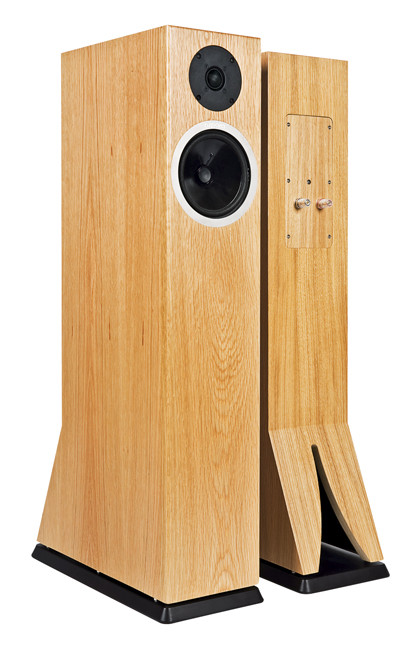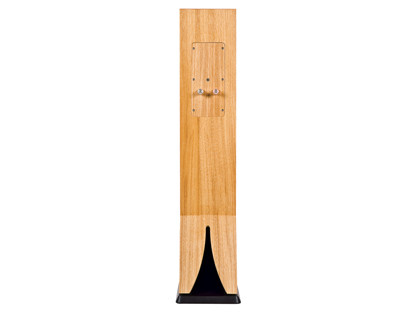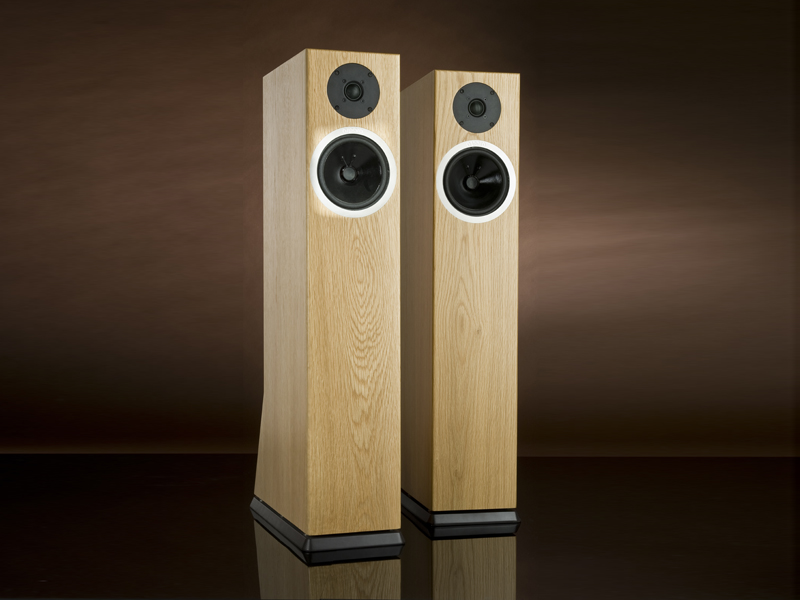TechRadar Verdict
Laid back but lively with it, this speaker is something of a paradox, but a very elegant one. Acoustic material sounds great and there are plenty of strengths in both its design and performance to heighten its overall appeal
Pros
- +
Lively character that's free from overhang
- +
Good sensitivity and an easy load
- +
Attractively designed
Cons
- -
Limited bass extension
- -
Some lack of presence
- -
Treble energy could also be better and does affect performance
Why you can trust TechRadar
Many enthusiasts love horn-loaded speakers, with their inherently high sensitivity, good control and vigorous dynamic expression. They originate from the mono era, when only one speaker was needed and valve amps had very low power. The trouble with this is full-size horns are simply too large for modern lounges.
Aspara's designers are both enthusiastic horn loudspeaker fans. Both were closely involved in the cult impulse horns during the '70s and '80s, but recognise that most people find full range horns altogether too bulky. Which is why the Aspara HL6 – effectively a successor to the earlier, obsolete but still highly regarded impulse H6 design – features quarter-wave loading, a technique that goes some way towards horn-loading, albeit in a more compact form.
The end result is not unlike a transmission line, the main difference being that the quarter-wave line expands towards its exit and is relatively lightly damped, whereas the transmission line usually narrows towards its exit and has rather more damping.
Staggered tuning
This is a simple two-way speaker, mounting a nominal 160-millimetre bass/mid drive unit with doped-paper cone in a necessarily complex, but very elegantly finished enclosure. Most floorstanders tend to look depressingly monolithic, largely one suspects because joining four planks together and adding a top and a base is the easiest and least costly solution.

However, it may not be the best way to add quarter-wave loading and this Aspara incorporates some interesting details to enhance both performance and appearance. These are best seen from the rear, with most of the back panel being vertical, but about 22 centimetres above the floor the sides start to widen progressively, the enclosure becomes steadily deeper and the back panel not only takes on a tilt to match, but also has a shaped cut-out that extends a little way up the back.
This is part of the quarter-wave 'mouth', along with a carefully controlled slot between the rear part of the enclosure and the plinth, creating an effective exponential exit. By these techniques, the length of the quarter-wave horn or pipe is subtly 'staggered' in order to 'spread' the tuning of its resonance across a wider frequency range than a straightforward quarter -wave pipe.
Internal damping seems to be confined to Deflex pads – a visco-elastic polymer with a corrugated surface – strategically placed internally on some panels.
The main driver has a lightweight 115-millimetre doped-paper cone and a PA heritage, which means a powerful motor well suited to quarter-wave loading. It's substantially modified by Aspara, by removal of the 'whizzer' cone to improve upper range integration with the 28-millimetre soft-dome tweeter.
After extended listening tests, including working with electronic musical instruments, the design was finalised with Duland silver cable feeding the main driver and cryogenically treated copper cable for the tweeter. The crossover network has a second order roll-off on the main driver, using Claritycap and Mundorf components, while a solitary top-of-the-line Claritycap feeds the tweeter.
Signal is applied to a single pair of high-quality terminals and physical stability is ensured by considerable depth and well-founded spikes fitted to the separate plinth. Last, but by no means least, a screw head in the middle of the terminal/crossover block allows the tweeter's relative level to be easily adjusted.
Hearts of oak
The slim front view shows an attractively figured oak plank – not the best material for a front panel perhaps, but it's mostly there for decoration. it covers a carcase built from tougher and much less acoustically transparent 18-millimetre birch plywood and this is the surface onto which the drivers are mounted. The internal partition needed to create the folded quarter-wave line further serves to stiffen the enclosure sides.
The closer one examines this speaker, the more its innate class, quality and elegance impresses. it looks a rather pricey proposition at £4,300, considering the relatively simple basic ingredients, but the fine detail shows a number of neat touches.
No grille is provided, but the two drive units are neatly rebated to keep the front flush and an attractive silver trim ring, embossed with the Aspara name, around the main driver frame. It's also nice to see the way the edges of the plinth have been chamfered and shaped, to avoid sharp corners and edges. These blend in with the base of the enclosure and increase the footprint.
Much of the remaining value is hidden, but detail ingredients like Claritycap and Mundorf components, as well as Deflex damping panels are all highly regarded and don't come cheap, especially when production volumes are modest.
Laid back, but lively!
This loudspeaker is something of a sonic paradox. Although the underlying character of its quarter-wave-loaded main driver is unquestionably lively through most of the bass and midrange, there's also significant lack of output in the upper presence and lower treble. As a result, vocal sibilants and consonants are somewhat suppressed, to the degree that speech sounds distinctly laid back. Some might even describe it as 'shut in' or even 'muffled' and certainly it's necessary to increase volume somewhat higher than one might expect in order to maintain good intelligibility.
While that is a significant criticism from the point of view of absolute neutrality and doesn't really suit this particular listener's preferences, I suspect that some may well like this degree of presence restraint. One advantage, for example, is that the volume can be turned up high without causing the sound to become in any way aggressive or edgy.
Another bonus – particularly enjoyed with classical material – is the fine stereo image airiness and spaciousness that this very restrained tonal balance seems to bring to the party. This isn't a smooth speaker, nor an even one, and it doesn't do deep bass either, but that seems to go with the quarter-wave territory.

Happily, another characteristic of the breed is crisp clarity and a freedom from thickening through the bass region, which many will regard as more than fair compensation. This agility and lack of overhang through the bass region seems to distinguish the quarter-wave approach from other bass loading techniques. And if it means such speakers lose out somewhat in terms of absolute weight and welly, the rewards are clearly audible in the natural realism heard when playing choral or other essentially acoustic material.
Percussion too has a delightful dexterity and lightness of touch. The effect of the treble control is easily heard. It only operates above the presence zone, so doesn't dramatically alter the speaker's character. While the mod-point seemed about right, the best settings ought to be determined according to individual system and room characteristics.
Controversial
It took quite a while to adjust to this speaker's very restrained presence, but the effort ultimately paid off, because in other respects the HL6 has an inherent liveliness and a freedom from overhang and thickening that's particularly persuasive with acoustic material.
The sound of orchestral instruments such as violins has the genuinely realistic texture that is often glossed over by more conventional speakers. This is an unusual and somewhat idiosyncratic loudspeaker that tries to hide its presence under a bushel, but ultimately wins through with its crisp dynamics elsewhere. It has its limitations, for sure, but also strengths that will easily win friends.
Follow TechRadar Reviews on Twitter: http://twitter.com/techradarreview
